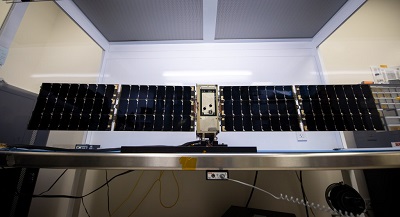Washington, (Asian independent) NASA on Friday launched a shoebox-sized satellite, which aims to unravel the mysteries of cosmic blasts, to the International Space Station (ISS).
The satellite, BurstCube, is enroute to the orbiting lab aboard SpaceX’s 30th Commercial Resupply Services mission. It lifted off at 4:55 p.m. EDT on Thursday, March 21 (2:25 am IST, Friday), from Launch Complex 40 at Cape Canaveral Space Force Station in Florida.
After reaching the ISS, “BurstCube will be unpacked and later released into orbit, where it will detect, locate, and study short gamma-ray bursts — brief flashes of high-energy light”, NASA said in a statement.
“BurstCube may be small, but in addition to investigating these extreme events, it’s testing new technology and providing important experience for early career astronomers and aerospace engineers,” said Jeremy Perkins, BurstCube’s principal investigator at NASA’s Goddard Space Flight Center in Greenbelt, Maryland, US.
BurstCube, which belongs to a class of spacecraft called CubeSats, can detect gamma rays with “energies ranging from 50,000 to 1 million electron volts”.
Current gamma-ray missions can catch only about 70 per cent of the sky as the Earth blocks their view. But with BurstCube “more bursts coincident with gravitational wave detections”, can be detected.
“BurstCube’s detectors are angled to allow us to detect and localise events over a wide area of the sky,” said Israel Martinez, research scientist and BurstCube team member at the University of Maryland, College Park and Goddard.








